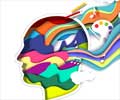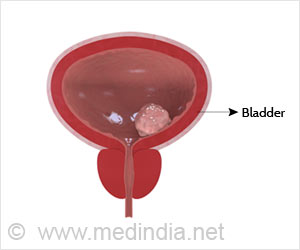A Personal Journey on how Arts helped navigate the challenges of Cancer Treatment.
- The transformative intersection of arts and health, drawing from a WHO/Europe report on integrating artistic interventions into the health system
- Personal testimonies at WHO, underscore the profound well-being benefits of engaging in artistic pursuits during health challenges //
- The global initiatives using arts to combat noncommunicable diseases signal a shift in healthcare perspectives
The Healing Power of Arts : What is Arts Therapy?
In healthcare, two prevalent approaches employ the transformative power of art. "Arts in health" involves artists trained to facilitate positive creative experiences in healthcare settings, integrating art into physical spaces. "Creative arts therapies" encompass licensed professionals using various art forms such as music, dance, and writing to address specific health goals. Art therapy, irrespective of the artistic output, focuses on the healing process. Creative arts therapy, employed in mental health, cancer treatment, and stroke recovery, utilizes artistic expression to alleviate anxiety, lower blood pressure, and stimulates positive thinking.The American Congress of Rehabilitation Medicine emphasizes the impact of art on the brain, noting its ability to increase serotonin levels, enhance blood flow to pleasure-associated areas, and foster new ways of thinking, providing a hopeful outlook (1✔ ✔Trusted Source
The intersection of art and health: How art can help promote well-being
Go to source).
Dating back to the 1940s, creative arts therapy gained traction in treating mental health conditions like anxiety, depression, and schizophrenia. It aids in improving focus, emotion processing, communication, and self-esteem.
While creative arts therapy benefits individuals of all ages, it holds unique advantages for children. It aids expression and communication for younger or nonverbal children, benefiting those with autism, children undergoing cancer treatment, and those with attention-deficit disorders.
Beyond prescribed therapy, simply experiencing art as an appreciator or creator offers health benefits. Creating visual art provides enjoyment and distraction, while listening to music may improve blood pressure and sleep quality, fostering calmness during medical procedures.
Stories of Resilience: Christopher Bailey's Experience with Arts and Cancer Recovery
At a conference in Budapest in December 2022, Christopher Bailey, Arts and Health Lead at WHO, shared a powerful personal experience. Amidst his struggle with obesity and cancer, Bailey found solace in the stories he shared on his blog and the plays he wrote for the theater.He emphasized how engaging in artistic endeavors provided him with a profound sense of well-being during the challenging period of cancer treatment. Bailey's experience underscores the potential for arts to contribute to healing and well-being (2✔ ✔Trusted Source
The power of healing: new WHO report shows how arts can help beat noncommunicable diseases
Go to source).
WHO Report on Arts as Complementary Therapy
The WHO/Europe report explores the idea that arts can serve as a valuable supplement to traditional medical treatments. Unlike invasive medical procedures, arts interventions are non-invasive and low-risk. The report highlights the potential of arts in complementing the prevention and treatment of NCDs, which pose a significant health threat in the WHO European Region.Hungary offers a unique choir rehabilitation program for patients recovering from respiratory illnesses, while in Vologda, Russia, fairy tales are reimagined to improve health literacy in schools.
These initiatives showcase the diverse ways arts can be integrated into healthcare to fight NCDs and reduce associated risks (3✔ ✔Trusted Source
Art Therapy
Go to source).
Previously centered on the need for more evidence, there is now recognition that arts significantly improve health and well-being. Health systems are adapting to this shift, exploring social prescribing to recommend evidence-based art therapies that are inclusive and bridge the gap between culture and health.
Art's potential extends beyond symptom treatment, enriching the entire self—physically, mentally, and emotionally. Whether embedded in hospital design, spontaneous concerts, or dedicated therapy sessions, art emerges as a powerful tool in promoting the well-being of individuals and communities within healthcare settings (4✔ ✔Trusted Source
The Connection Between Art, Healing, and Public Health: A Review of Current Literature
Go to source).
References:
- The intersection of art and health: How art can help promote well-being - (https://mcpress.mayoclinic.org/living-well/the-intersection-of-art-and-health-how-art-can-help-promote-well-being/)
- The power of healing: new WHO report shows how arts can help beat noncommunicable diseases - (https://www.who.int/europe/news/item/15-11-2023-the-power-of-healing--new-who-report-shows-how-arts-can-help-beat-noncommunicable-diseases)
- Art Therapy - (https://www.ncbi.nlm.nih.gov/books/NBK549771/)
- The Connection Between Art, Healing, and Public Health: A Review of Current Literature - (https://www.ncbi.nlm.nih.gov/pmc/articles/PMC2804629/)
Source-Medindia












